Are you trying to decide between Barcelona or Madrid for your next trip to Spain? Spain’s two most iconic cities offer distinctly different but equally enchanting experiences. Whether you’re drawn to Madrid’s regal elegance or Barcelona’s coastal creativity, this guide will help you discover which Spanish gem aligns perfectly with your travel style.
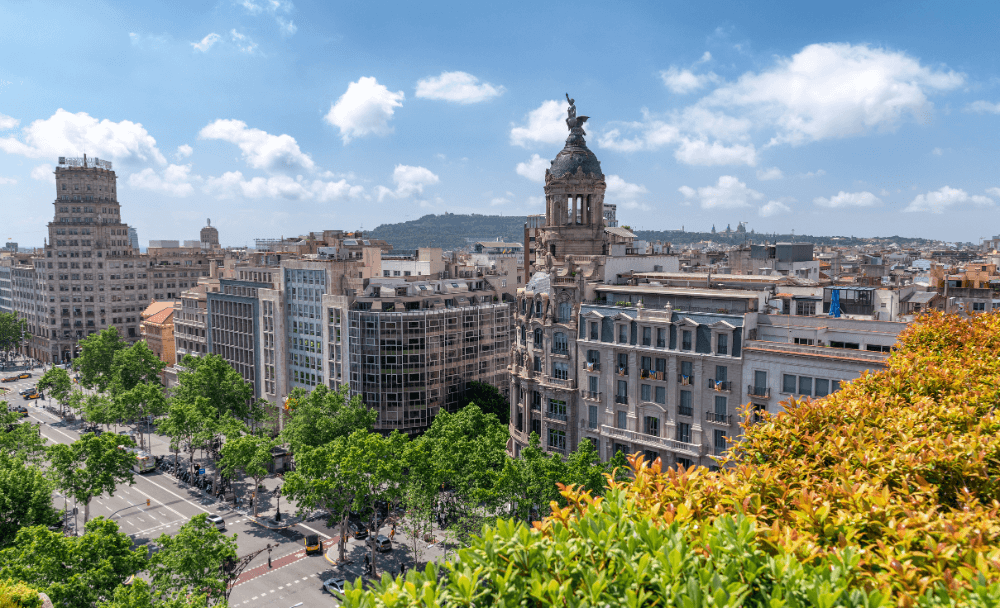
Madrid dazzles as Spain’s sophisticated capital, with grand boulevards, world-class museums, and authentic Spanish culture pulsing through its veins. Barcelona captivates with its artistic flair, Mediterranean beaches, and the unmistakable architectural genius of Gaudí.
Both Madrid and Barcelona offer world-class art, rich culture, and excellent day trip opportunities, making them top destinations for travellers seeking the best of Spain. Both cities showcase Spain’s vibrant spirit in their own unique ways.
Spain’s artistic and architectural heritage stands among the world’s most impressive, shaped by centuries of diverse influences from Roman and Moorish to Gothic and modernist movements.
Immersing yourself in these cultural treasures offers insight into the Spanish soul and provides the richest understanding of this complex, passionate nation. Whether admiring masterpieces in hushed galleries or marvelling at soaring cathedrals, these cultural experiences will form the emotional centrepiece of your Spanish journey.
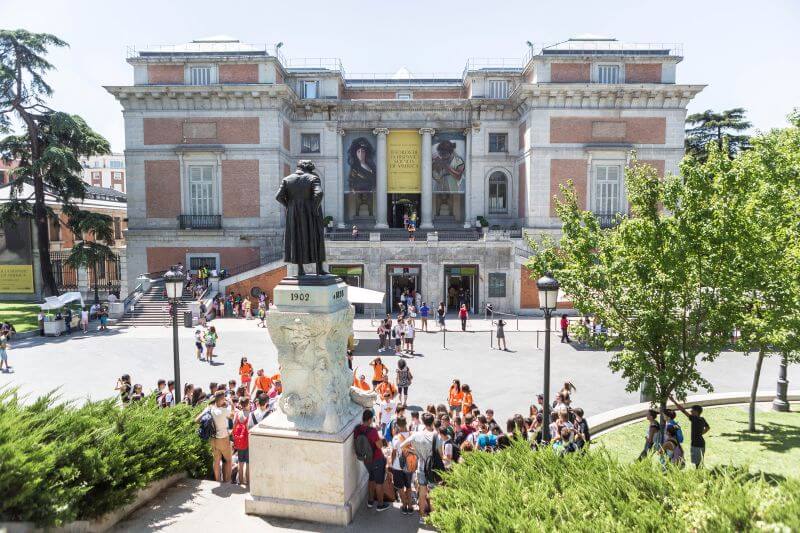
Madrid houses an extraordinary collection of art museums that form the famous “Golden Triangle of Art”:
Prado Museum: Home to an extensive collection of masterpieces by Velázquez, Goya, and El Greco, showcasing the breadth of European art.
Reina Sofía Museum: The Reina Sofía is a must-see for modern art lovers, where Picasso’s powerful “Guernica” takes centre stage and the museum’s excellent collection highlights the best of contemporary Spanish art.
Thyssen-Bornemisza Museum: Featuring an impressive span of European art history
Together, these museums are a treasure trove for art enthusiasts, offering an abundance of cultural masterpieces and artistic heritage.
The magnificent Royal Palace stands as one of Western Europe’s largest royal residences, offering a glimpse into Spain’s regal past with its opulent rooms and beautiful gardens.
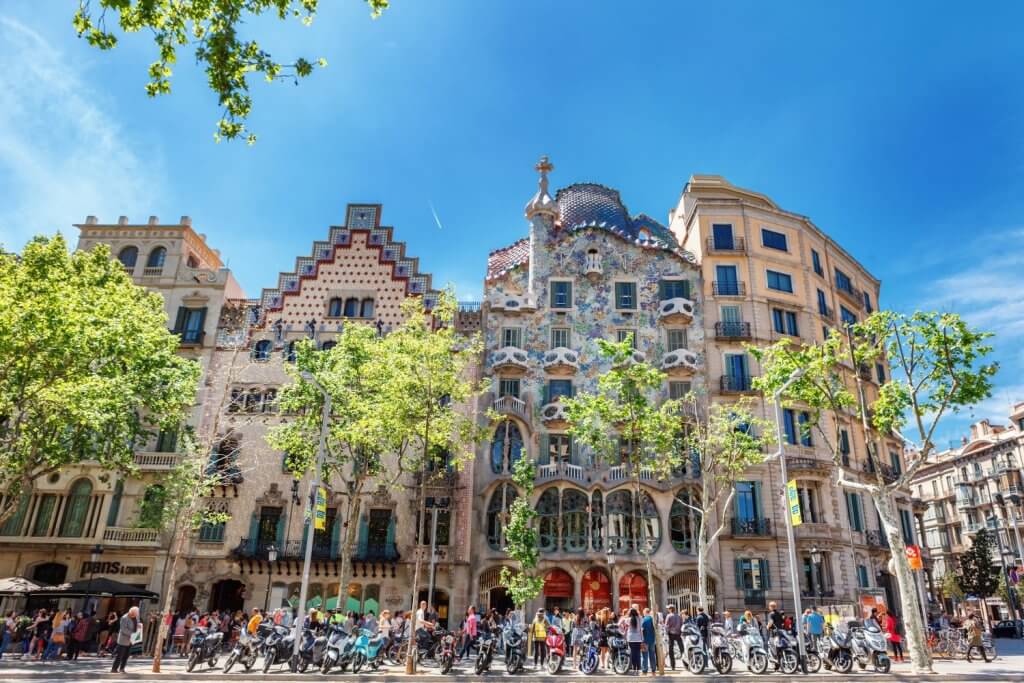
Barcelona’s skyline is defined by the visionary works of Antoni Gaudí, which stand among the city’s architectural treasures:
Sagrada Familia: This awe-inspiring basilica combines Gothic and Art Nouveau influences in a structure still under construction after more than 140 years
Park Güell: A whimsical public park featuring Gaudí’s signature colourful mosaics and organic forms
Casa Batlló and Casa Milà: Stunning examples of Gaudí’s revolutionary residential designs
The atmospheric Gothic Quarter invites you to wander through medieval lanes where centuries of history are preserved in stone. Don’t miss the Barcelona Cathedral, a must-see Gothic landmark renowned for its impressive structure and historical significance. The Picasso Museum chronicles the artist’s formative years and is a highlight for those interested in modern art.
Pro tip: Book tickets online in advance for major attractions in both cities to avoid long lines, especially during peak season.
Barcelona’s neighbourhoods and landmarks showcase a rich history that shapes the city’s unique cultural identity.
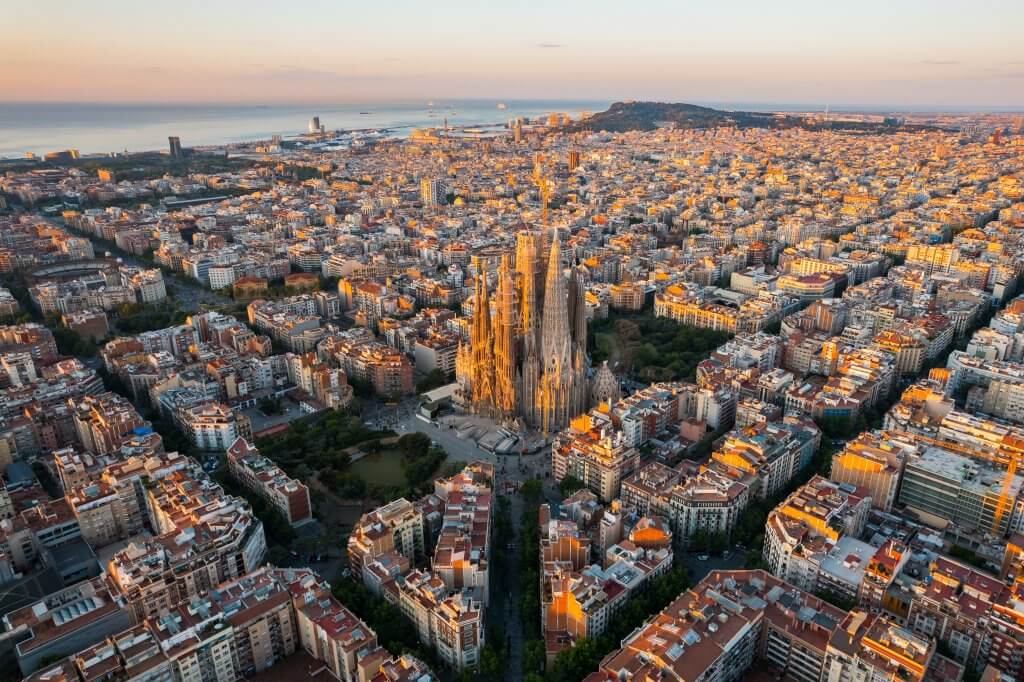
Spanish cities pulse with a uniquely vibrant energy that transforms ordinary streets into theatres of daily life. Among Spain’s big cities, Madrid and Barcelona stand out for their distinct personalities and lively atmospheres. The concept of “paseo” – the evening stroll where locals socialise in public spaces – exemplifies how Spaniards embrace their urban environments as extensions of their homes.
Understanding the rhythm and character of a Spanish city reveals the authentic essence of Spain beyond the tourist sites. These two cities, each with their own unique urban vibe aren’t just backdrops for your travels but living communities that invite you to participate in the Spanish way of life, where conversations flow freely and time moves at its own leisurely pace.
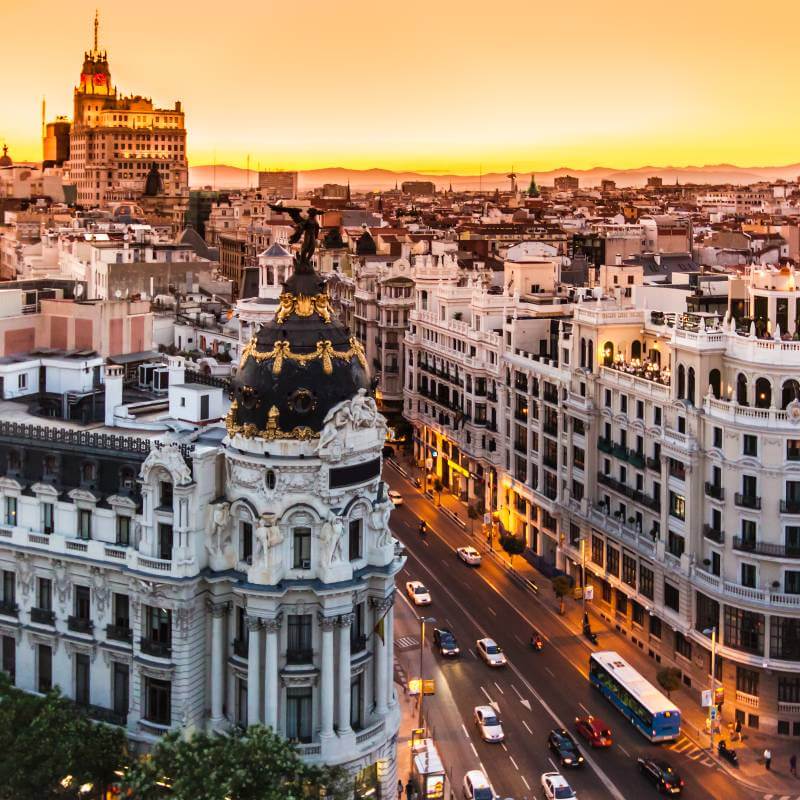
Madrid embodies classic Spanish city life with its elegant boulevards and expansive plazas. The city feels authentically local despite its capital status, with fewer tourists than many European destinations.
Madrid’s historic centre is a highlight, featuring winding medieval streets and vibrant plazas that showcase the city’s rich history and architectural charm. Retiro Park offers a peaceful green heart where locals and visitors alike enjoy boating on the lake or relaxing beneath the trees. The city’s logical layout makes exploration a delight, whether on foot or via the excellent Metro system.
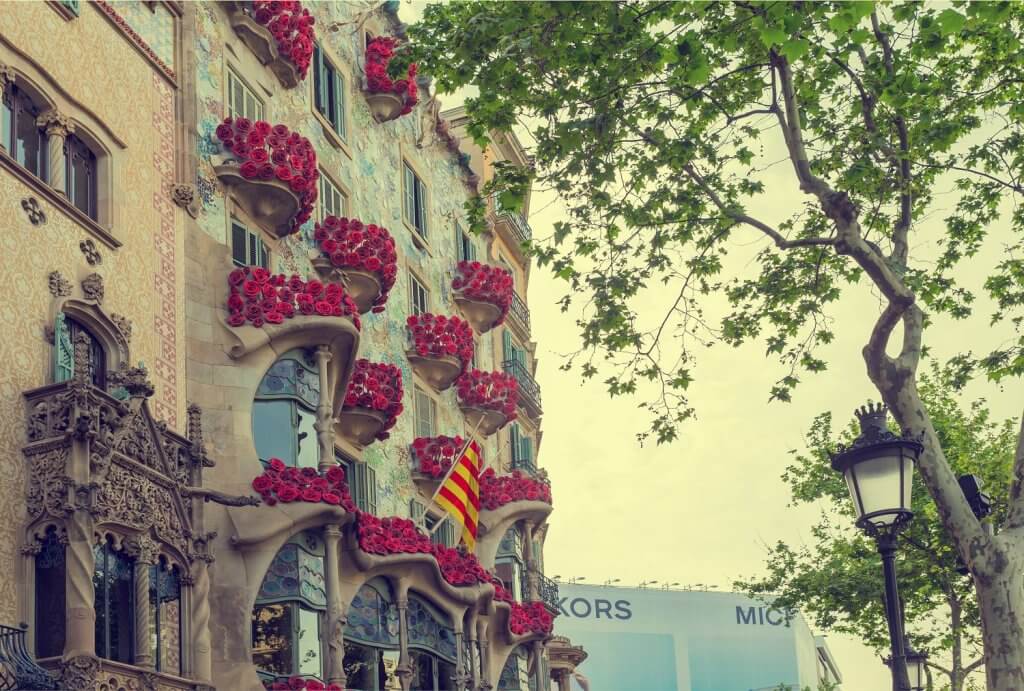
Barcelona pulses with creative energy and coastal charm. The city seamlessly blends beach culture with urban sophistication. The city’s unique combination of stunning architecture, lively beaches, and vibrant nightlife makes it a truly beautiful city that captivates visitors from around the world.
Stroll down the vibrant Las Ramblas, explore the trendy El Born neighbourhood, or simply bask in the Mediterranean sunshine on Barceloneta Beach. Barcelona’s distinctive districts each offer their own personality, from the bohemian vibe of Gràcia to the modernist elegance of Eixample.

Spain’s gastronomic traditions are inseparable from its cultural identity, where meals transcend mere sustenance to become cherished social rituals. From humble tapas bars to avant-garde restaurants, Spanish cuisine reflects the country’s history, geography, and rich culture, showcasing diverse traditions and vibrant local customs.
Understanding the Spanish approach to dining and night life – late meals, shared plates, and a celebratory atmosphere that extends into the early hours – enriches your connection to the country. Food in Spain isn’t just nourishment but a gateway to authentic cultural experiences, where conversation flows as freely as the wine and time slows to savour life’s pleasures.
For budget-conscious travellers, there are plenty of cheap things like affordable tapas and drinks, making Spanish dining accessible to everyone.
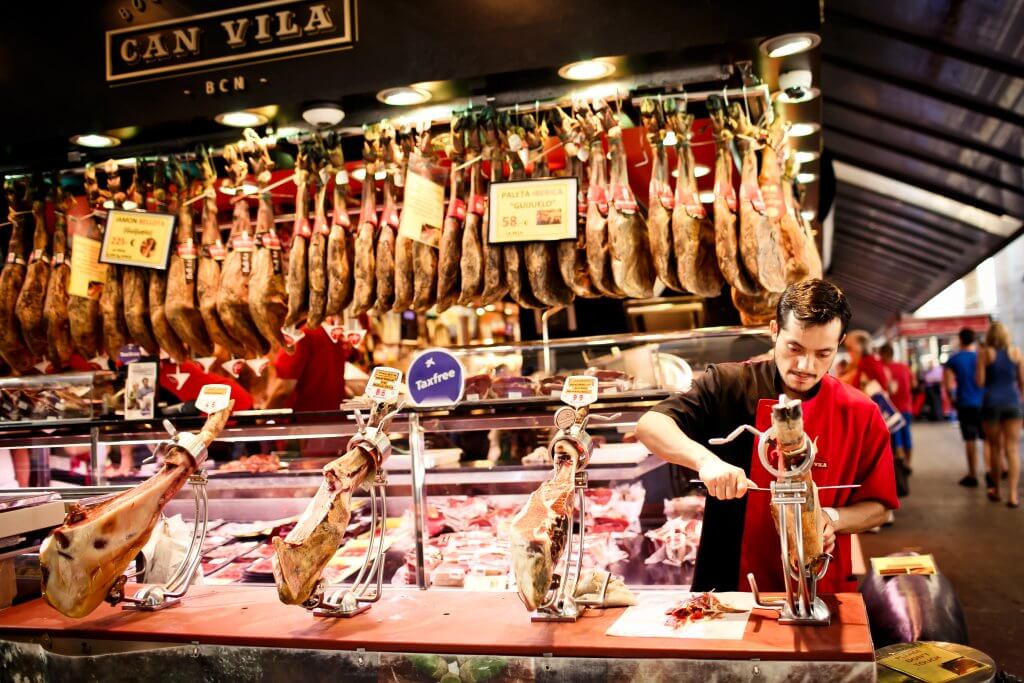
Barcelona offers a culinary fusion of Catalan traditions and Mediterranean ingredients:
La Boqueria Market: Wander through this colourful market filled with fresh produce, seafood, and regional specialities. Barcelona’s proximity to the Mediterranean Sea ensures an abundance of fresh seafood, which shapes the city’s cuisine with dishes like paella and tapas.
Barceloneta Beach Restaurants: Enjoy paella with sea views at this popular beachfront district
El Born Eateries: Discover trendy restaurants serving creative Catalan cuisine
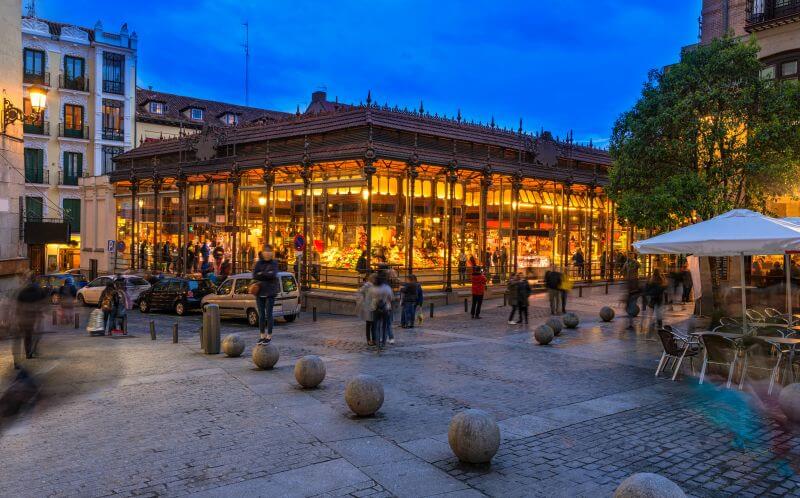
Madrid celebrates traditional Spanish cuisine with modern flair:
Mercado de San Miguel: This gourmet market is perfect for sampling tapas, fresh seafood, and Spain’s famous Iberian ham
La Latina: This neighbourhood buzzes with tapas bars ideal for an evening crawl
Cocido Madrileño: Don’t miss trying this hearty chickpea and meat stew, a local speciality
Some food markets and cultural sites in Madrid also offer free entry, making it easy to experience local flavours on a budget.
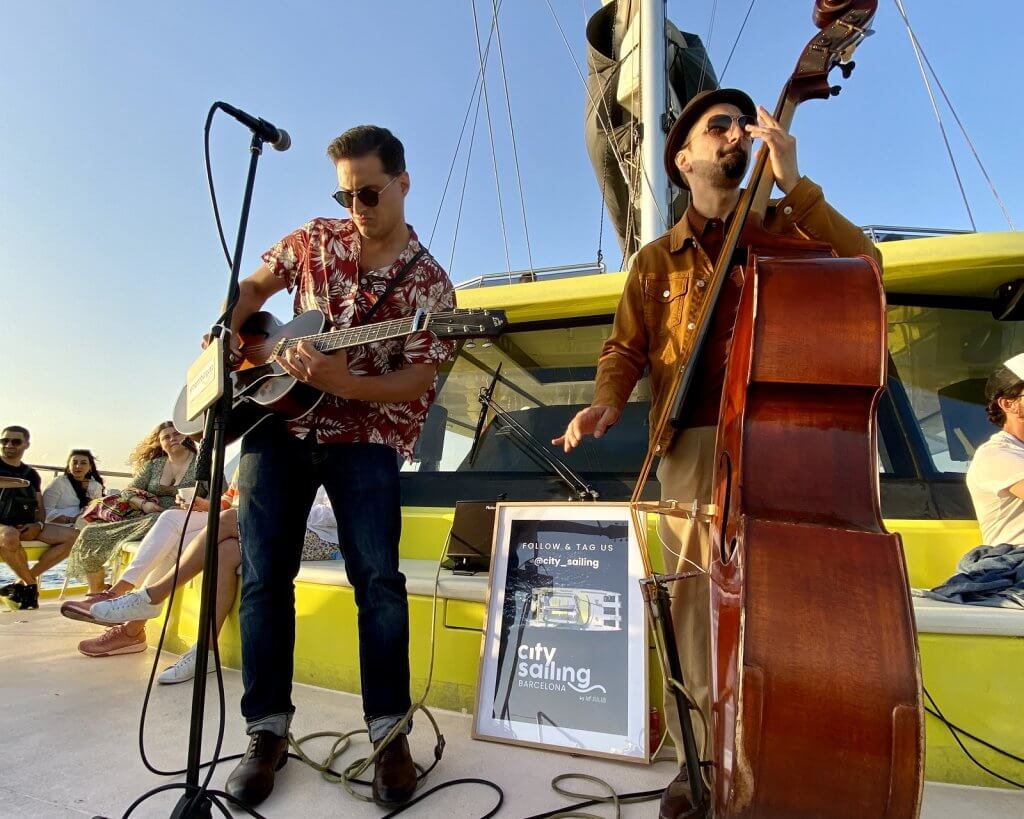
Both cities truly come alive after dark. Madrid’s legendary nightlife keeps going until sunrise, with everything from sophisticated cocktail bars to energetic dance clubs. While Barcelona, as a major tourist city, offers beachside lounges, rooftop bars with panoramic views, and vibrant districts like Poblenou where you can dance until dawn, Madrid’s nightlife has a more local feel, attracting residents and offering a less touristy atmosphere.
Local tip: Dining in Spain happens late by many international standards – dinner rarely begins before 9pm, and nightlife extends well into the early morning hours.
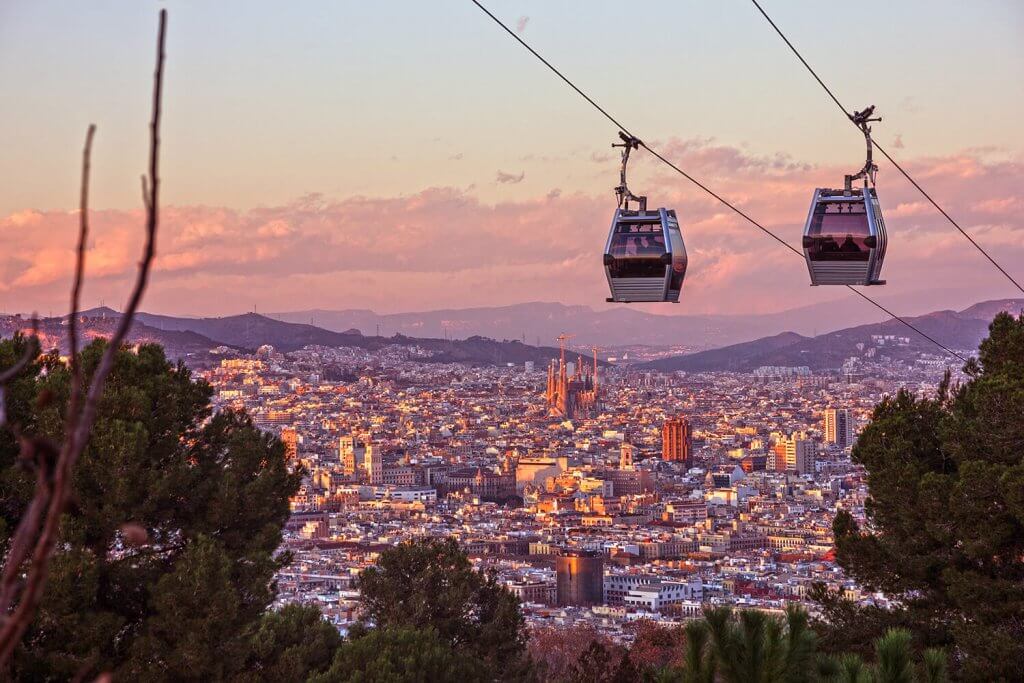
Spain’s diverse regions offer travellers a unique blend of landscapes, cultures, and experiences. Each area reflects the long history of Spain’s kingdoms, with centuries of development shaping local traditions, cuisine, and architecture. Spain’s geographic diversity creates remarkable contrasts within a single country – from sun-drenched Mediterranean coasts to snow-capped mountain ranges, arid plains to lush northern valleys.
This varied landscape shapes not just the climate but also the character of each region’s cuisine, architecture, and cultural traditions. Understanding Spain’s geography and climate patterns helps you plan the perfect itinerary for your preferences, whether you seek urban exploration, beach relaxation, or mountain adventures.
Travel tips: Consider using Spain’s high-speed trains for efficient travel between major cities, book tickets in advance during peak seasons, and explore regional buses for access to smaller towns. The country’s excellent transportation networks make it surprisingly easy to experience these diverse landscapes, allowing you to craft a journey that captures Spain’s multifaceted beauty.
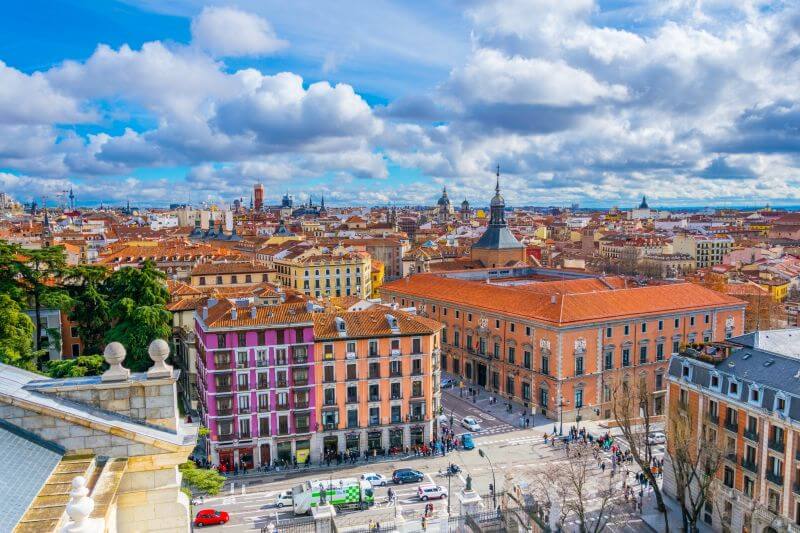
Located in the centre of the Iberian Peninsula, Madrid enjoys a continental climate with hot, dry summers and cool winters. The city’s central location makes it an ideal base for exploring other regions of Spain, with excellent rail and road connections.
Madrid also offers convenient access to southern Spain, with direct train connections to popular destinations like Seville, Granada, and Cordoba, making it easy to explore these regions within a limited timeframe.
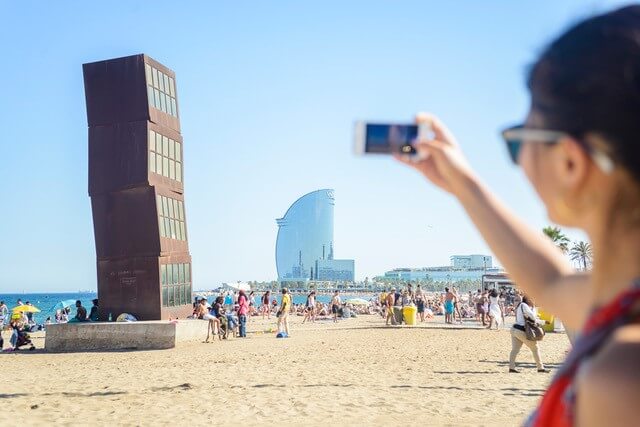
Barcelona’s coastal location blesses it with a mild Mediterranean climate year-round. The city’s beaches offer a unique urban seaside experience, and its port makes it a popular cruise ship destination. The proximity to the Pyrenees also means mountain excursions are easily accessible.
Barcelona is also a convenient base for exploring the Costa Brava, a scenic coastal region known for its beautiful beaches, charming towns, and diverse attractions.

Spain offers exceptional value compared to many European destinations, with a wide range of experiences accessible to various budgets. Understanding the practical aspects of Spanish travel – from regional price differences to tipping customs and opening hours – ensures a smoother journey and helps you allocate your resources wisely.
Smart planning allows you to splurge on special experiences while finding affordable pleasures in daily Spanish life. These practical considerations free you to focus on cultural immersion rather than logistical concerns, allowing authentic connections to flourish naturally throughout your travels.
Barcelona is a much more touristy city compared to Madrid, and this popularity means tourists bring prices up, especially in central areas. As a result, Barcelona is often less affordable, while Madrid tends to offer more budget-friendly options and better value, particularly in neighbourhoods beyond the main tourist zones.
For these reasons, some travellers have a preferred Madrid, appreciating its authentic atmosphere and the opportunity to experience local culture without the crowds and higher costs found in Barcelona.
The high-speed AVE train connects Madrid and Barcelona in just 2.5 hours, making it entirely possible to visit both cities in one trip. The train conveniently links the city centre of Madrid with the city centre of Barcelona, allowing travellers to arrive directly in the heart of each city.
Both cities boast excellent public transportation systems that make getting around effortless and affordable. And both cities feature accommodation options for every budget, from luxury hotels to charming guesthouses and budget-friendly hostels.
To maximize your experience while managing costs, consider purchasing the Madrid City Pass, which includes must-see attractions like the Prado Museum, the Museo Thyssen-Bornemisza, and tours of both iconic football clubs’ homes (Real Madrid and Atlético Madrid), along with a panoramic city tour.
Similarly, the Barcelona City Pass offers optional skip-the-line entry to Gaudí masterpieces like Sagrada Familia and Park Güell, plus a tour with the hop-on-hop-off bus and a FC Barcelona stadium tour. These city passes quickly pay for themselves in both convenience and savings, allowing you to focus on enjoying Spain’s cultural treasures rather than standing in ticket lines.

A day trip from Madrid or Barcelona offers travellers the perfect opportunity to explore the rich culture and history of Spain beyond the city limits. Spain’s remarkable diversity reveals itself most clearly when you venture beyond major cities to discover its small towns and natural landscapes.
These charming small towns, easily accessible from Madrid and Barcelona, provide unique experiences and a glimpse into local traditions. These excursions showcase Spain’s regional identities, where distinct languages, cuisines, and traditions have evolved over centuries. If you’re planning your first trip to Spain, be sure to include both the iconic city sights and nearby escapes to get a well-rounded perspective.
Day trips transform a city-based vacation into a more comprehensive Spanish experience, revealing how dramatically the country changes across relatively short distances. These nearby escapes provide breathing room from urban energy while deepening your understanding of Spain’s complex historical tapestry and natural beauty.

Toledo: Explore this UNESCO World Heritage site with its medieval architecture and El Greco masterpieces (30 minutes by train)
Segovia: Marvel at the impressive Roman aqueduct and fairytale-like Alcázar (30 minutes by high-speed train)
El Escorial: Visit this historic royal complex combining a monastery, palace, and museum (45 minutes by train)
Plaza Mayor: Don’t miss Plaza Mayor, Madrid’s iconic central square, known for its historical significance and vibrant atmosphere.
Bernabeu Stadium: Discover the home of Real Madrid, where you can explore the stadium, learn about football history, and visit the museum dedicated to the club’s legendary achievements.
Las Ventas Bullring: Experience the cultural and historical importance of Las Ventas Bullring, a renowned venue for bullfighting events and a symbol of Madrid’s traditional Spanish heritage.
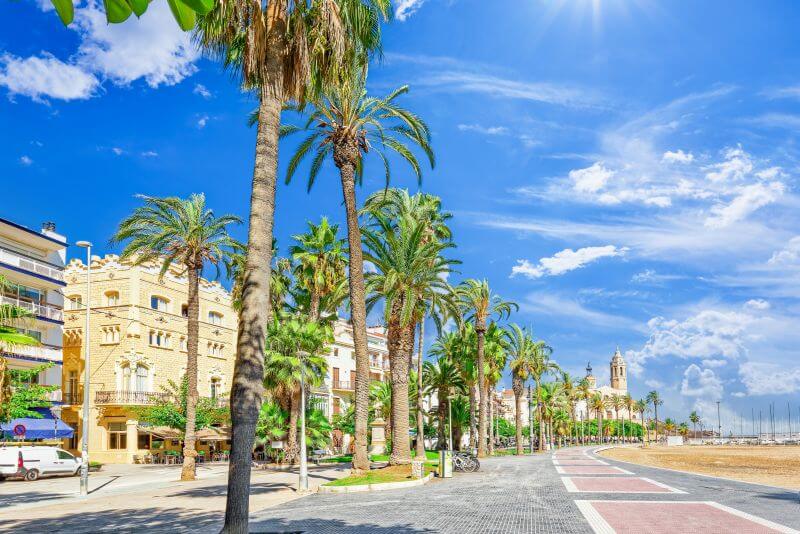
Montserrat: Discover this dramatic mountain sanctuary and its famous Black Madonna (1 hour by train)
Sitges: Relax on beautiful beaches in this charming coastal town (40 minutes by train)
Girona: Wander through one of Catalonia’s most picturesque cities with its well-preserved medieval quarter and enchanting cobblestone streets (38 minutes by high-speed train)
Camp Nou & FC Barcelona: Football fans should not miss a visit to Camp Nou, the iconic stadium of FC Barcelona, where you can tour the grounds and shop for official team merchandise at the FC Botiga Megastore

Classical art and museums
Traditional Spanish culture and history
Grand urban landscapes and elegant architecture
Authentic local experiences with fewer tourists
Central location for exploring inland Spain
Many travellers have loved Madrid for its authenticity and vibrant atmosphere. A first visit to Madrid can leave a lasting impression, as the city’s unique blend of tradition and modernity often sets the tone for future trips to Spain.
Madrid offers the quintessential Spanish capital experience – elegant, sophisticated, and deeply authentic. The city embodies Spain’s golden age and modern vitality in equal measure, with a more relaxed pace than many European capitals.
What makes Madrid truly special is how it maintains its local character despite its international importance. Here, you’ll experience Spain as Spaniards do, with fewer tourist crowds but all the cultural richness you could desire. Its central location also makes it the perfect gateway to exploring Spain’s diverse interior regions, from historic Castilian towns to the wineries of La Rioja.
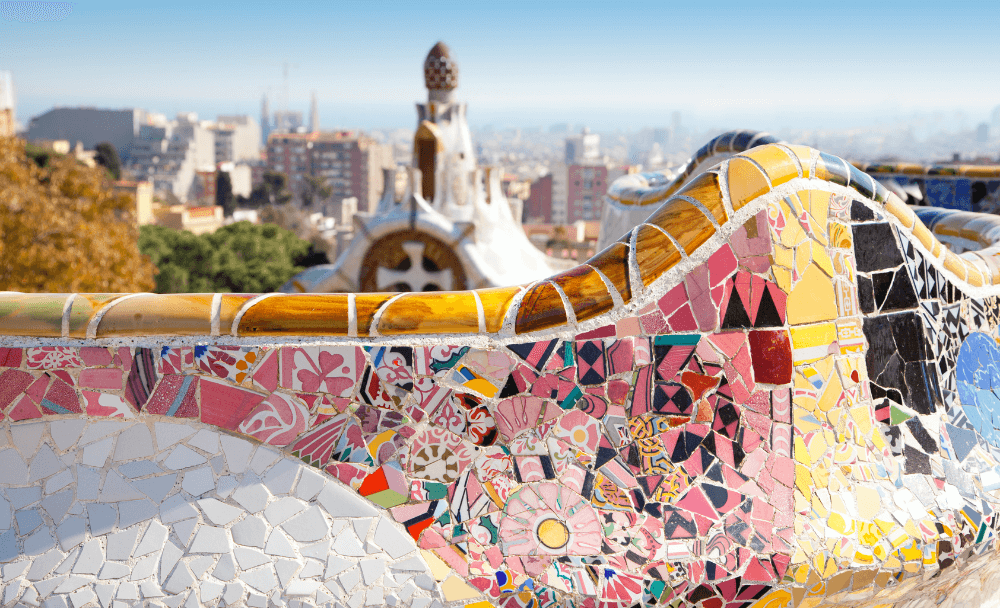
Innovative architecture and design
Beach culture combined with city life
Creative, bohemian atmosphere
Mediterranean cuisine and coastal vibes
Easy access to both mountains and sea
Many visitors love Barcelona for its unique blend of vibrant culture, world-class art, and relaxed coastal lifestyle. Spending a few days in Barcelona allows you to fully experience its highlights, from exploring iconic museums and architectural wonders to enjoying the beaches and lively neighbourhoods.
Barcelona delivers a uniquely captivating blend of urban sophistication and Mediterranean leisure that few cities in the world can match. Its stunning visual character – from surreal Gaudí masterpieces to palm-lined beaches – creates an atmosphere of constant wonder and discovery.
The city’s forward-thinking, creative energy attracts artists, designers, and innovators, giving Barcelona its distinctive cosmopolitan buzz. Here, you can start your morning admiring architectural marvels, spend your afternoon on the beach, and dine at world-class restaurants by evening – all without leaving the city limits.
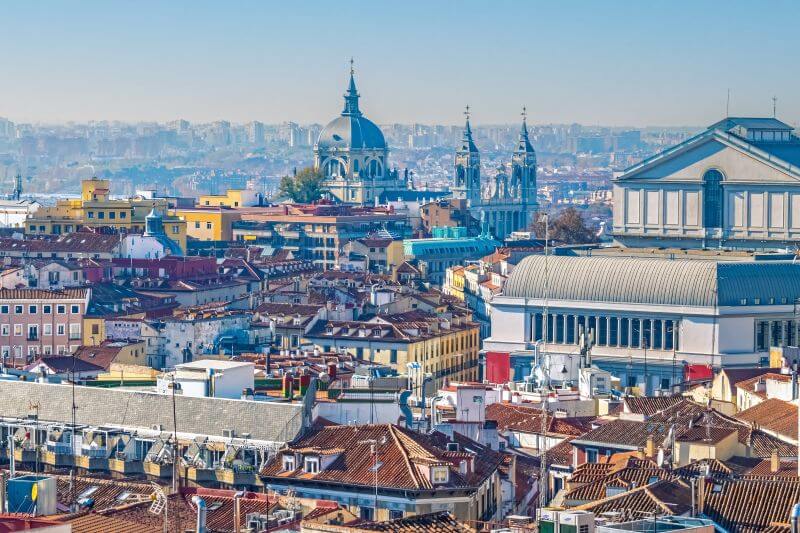
The beauty of these two Spanish treasures is that they complement each other perfectly. Their differences are precisely what makes visiting both so rewarding. With just 2.5 hours between them on the high-speed train, you can easily experience the diverse personalities and rich history of Spain’s most beloved cities in one unforgettable journey.
Whether you’re savouring tapas in Madrid’s historic plazas or watching the sunset from Barcelona’s beaches, both cities promise the warmth, passion, and joie de vivre that make Spain one of the world’s most beloved destinations.
Be sure to visit Madrid as part of your Spanish adventure to explore its vibrant neighbourhoods, fascinating day trips, and cultural attractions alongside Barcelona’s own rich history. Your Spanish adventure awaits – ¡Buen viaje!